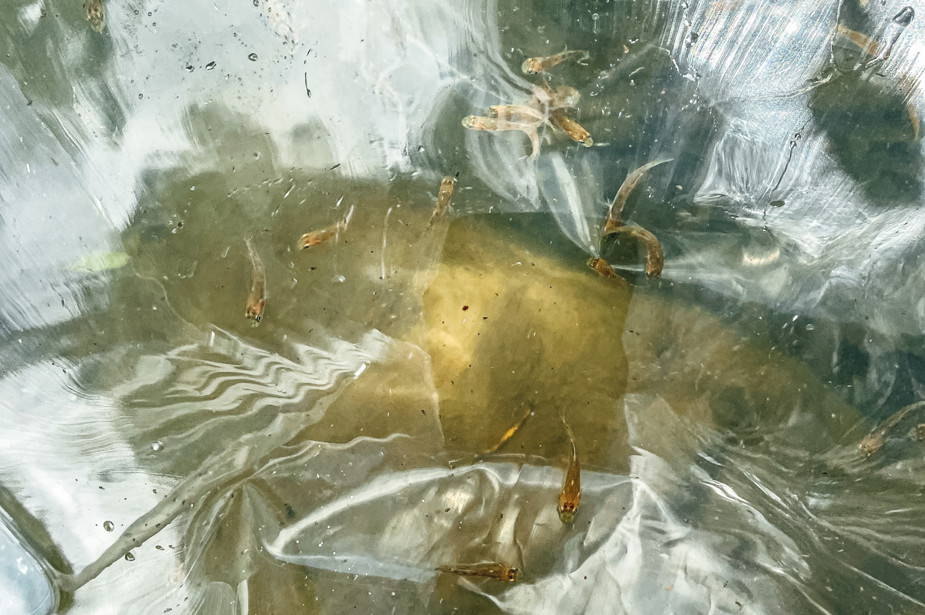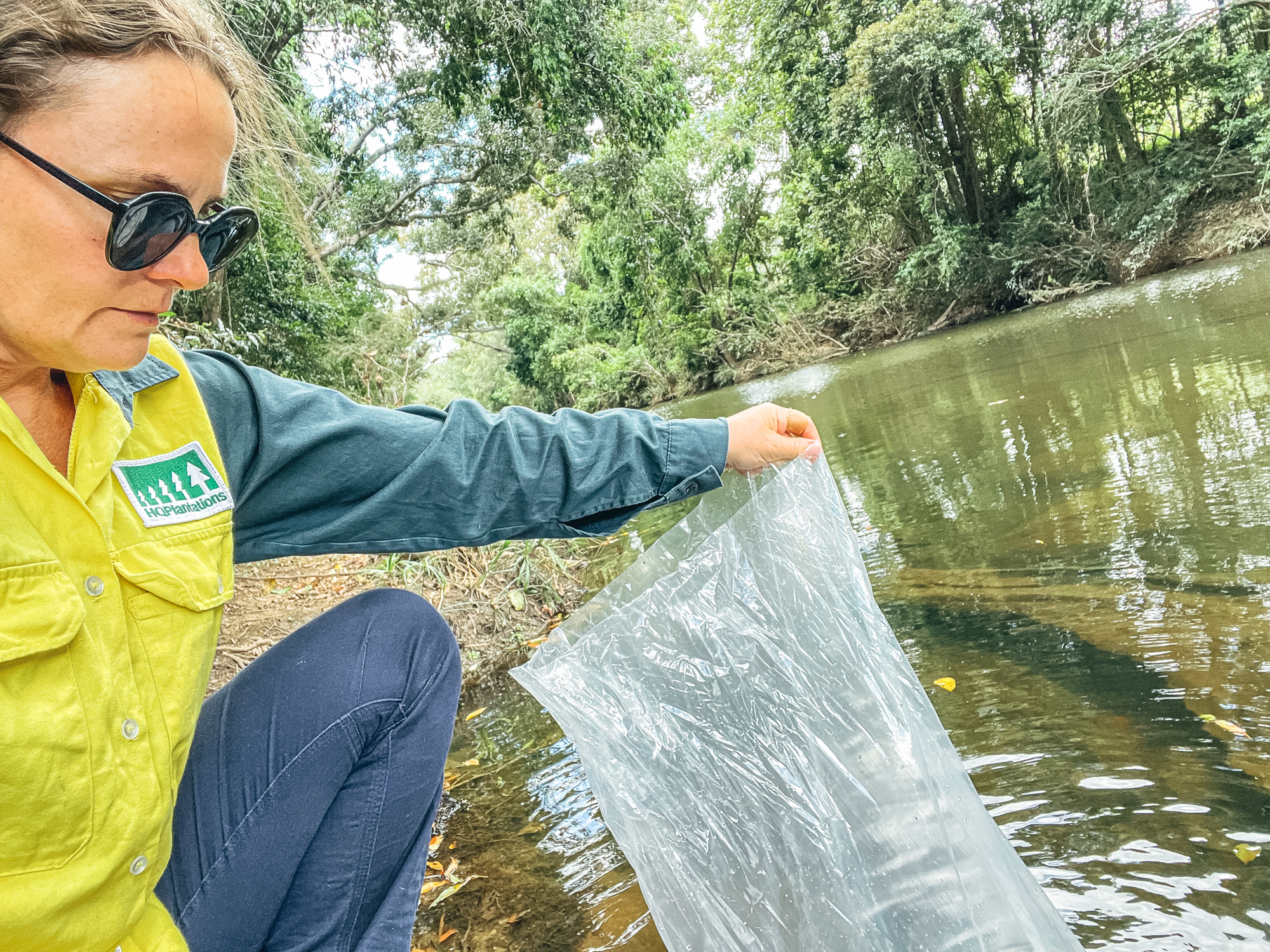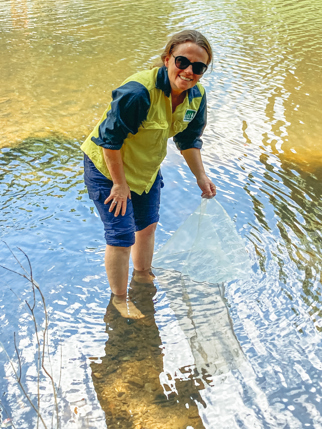HQP releases Mary River cod fingerlings

Boosting the Mary River Cod population – HQPlantations release cod fingerlings in Yabba, Kandanga and Amamoor Creeks.
The endangered Mary River Cod - Maccullochella mariensis is only found in the Mary River Catchment. After a significant decline in numbers, a captive breeding and release program was established and has been in place for over forty years.
In November 2022, Kath Nash joined the Mary River Catchment Coordinating Committee to release cod fingerling raised at the hatchery in Cooroy in an effort to boost numbers. The fingerlings were released in locations all over the catchment. The 525 fingerlings nominated to HQP were released in Yabba, Kandanga and Amamoor Creeks.

The Mary River cod was once so common in the catchment that they were caught and used as pig food by settlers. By the mid 1990s it was estimated that there were less than 600 individuals remaining. A combination of overfishing and habitat deterioration contributed to the population decline that occurred between the 1930s and 1960s.
Mary River cod prefer shady, deep pools with large root balls and tree trunks. Although the big cod are omnivorous, smaller cod eat mostly shrimp and small-bodied fish. The cod is one of the major predators in the Mary River, so the reduction in numbers has had a flow-on effect on the ecosystem of the river.

Cod are territorial and tend to have a home range up to one kilometer, within that range they will have several deep holes where they spend most of their time. To breed, they will travel up to 70 km to find a mate. The female cod deposits her eggs within submerged hollow logs and caves. The male cod is a doting dad, who guards the eggs and then stays with the young fish for several days after they hatch. Mary River cod live to at least 40 years of age and can grow to be as heavy as an average 12 year-old child.
They breed in freshwater during summer and spring. Water temperature is a critical factor during breeding. To trigger breeding, temperatures need to reach 20 degrees Celsius. Shading of the water by riparian vegetation helps to maintain a suitable temperature range (20-28° C) for the cod.
The Mary River cod is a protected species, under the Environmental Protection and Biodiversity Conservation Act (EPBC ACT), so we live in hope the recently released fingerlings will make it to the grand old age of 40.
Reference – MRCCC (2013) , Something about Mary.
